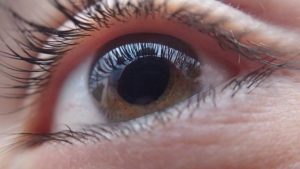Best Eye Drops for Glaucoma
Although eye does not define glaucoma, it is the most significant risk factor for Glaucoma. The goal of all glaucoma drops is to lower the eye pressure. By lower the eye pressure, damage to the optic nerve can be stabilized and progression slowed or stopped. All glaucoma drops require a prescription. These prescriptions can be obtained by any licensed doctor but the doctors in the best position to diagnose and treat glaucoma are eye doctors (ophthalmologists or optometrists). Opticians do not prescribe glaucoma eye drops.
There are many different classes of eye drops approved for the treatment of glaucoma. They are classified by mechanism or action or they type of active drug. Glaucoma drops may reduce the production of fluid or help to drain the fluid or both. Either mechanism of action will lower the intraocular pressure.
Eye drops for glaucoma have different duration of action and some must be used as often as 4 times a day or some as infrequently as once a day. The drops are designed to preserve your peripheral vision. Even with optimal treatment, if you have lost peripheral vision, it is unlikely that this loss will ever be restored. It is thought that the lower the pressure, the lower the chance of progression of visual deterioration.
As with any medication, there are some potential side effects. Side effects can be local or systemic from redness and irritation to lash growth to eye color change to respiratory distress, heart block and death. Naturally, serious side effects are rare. To minimize the risk of systemic side effects, only use the drops as prescribed and notify your doctor of any systemic diseases (bradycardia, heart block, asthma). You can also practice punctal occlusion or gentle lid closure after the installation of your drops. By placing your finger in the corner of your eye, you can minimize drainage to the nasal and oral cavity and systemic absorbtion.
Talk to your eye doctor about the best eye drops or other treatments for glaucoma such as MIGS or SLT laser treatment.
Types of Glaucoma Eye Drops
Glaucoma medications are grouped based on their main active ingredient. There are several different classes of prescription eye drops.
Your eye doctor can determine the best eye drops for you specifically, based on your health history, other conditions, or medications you are taking.
You may have to try a few different types of eye drops before settling on the one that is ideal for you. Combination medications can also be beneficial. The best eye drops are designed to lower your eye pressure enough to prevent damage to your optic nerve.
These are types of eye drops for glaucoma:
-
Prostaglandin analogs with or without Nitric oxide donators
-
Beta-blockers
-
Carbonic anhydrase inhibitors
-
Alpha-adrenergic agonists
-
Rho-kinase inhibitors
-
Miotic or cholinergic agents
-
Combined medications
How Eye Drops for Glaucoma Work
Glaucoma eye drops are effective at controlling your pressure if you take them exactly as directed. You need to put them directly into your eyes according to the FDA approval for optimal protection.
Glaucoma medications work in one of several ways to control the pressure in your eyes. They either enhance the drainage of fluid from the eye or they keep your eyes from producing as much fluid or both. Thes actions lower your pressure.
Prostaglandin analogs, nitric oxides, Rho kinase inhibitors, and miotic or cholinergic agents increase fluid drainage. Beta blockers, alpha-adrenergic agonists, and carbonic anhydrase inhibitors lower fluid production.
Features of These Eye Drops
 Many eye drops for glaucoma can have systemic side effects, meaning they can impact your entire bodily system. Eye drops are placed topically into the eye, but they still enter your blood.
Many eye drops for glaucoma can have systemic side effects, meaning they can impact your entire bodily system. Eye drops are placed topically into the eye, but they still enter your blood.
These are potential side effects of glaucoma eye drops:
- Blurry vision
- Dry mouth
- Headache
- Changes in eye color
- Eye irritation, including stinging, burning, itching, and/or redness
- Fatigue
- Drowsiness
- Lower blood pressure and heart rate
- Shortness of breath
- Decreased night vision
- Allergic reaction
Eye drops that contain preservatives can have toxic effects on your eyes. As a result, preservative-free eye drops are often a better option.
There are a lot of options for eye drops that control IOP. For glaucoma treatment, eye drops are considered the front-line treatment option. Occasionally, you may need to also take oral medications in conjunction with eye drops. There are oral medications that can decrease your eye pressure.
Schedule an appointment, 866-295-2020 to arrive at your personal best treatment for glaucoma or ask a question on Quora.com.
